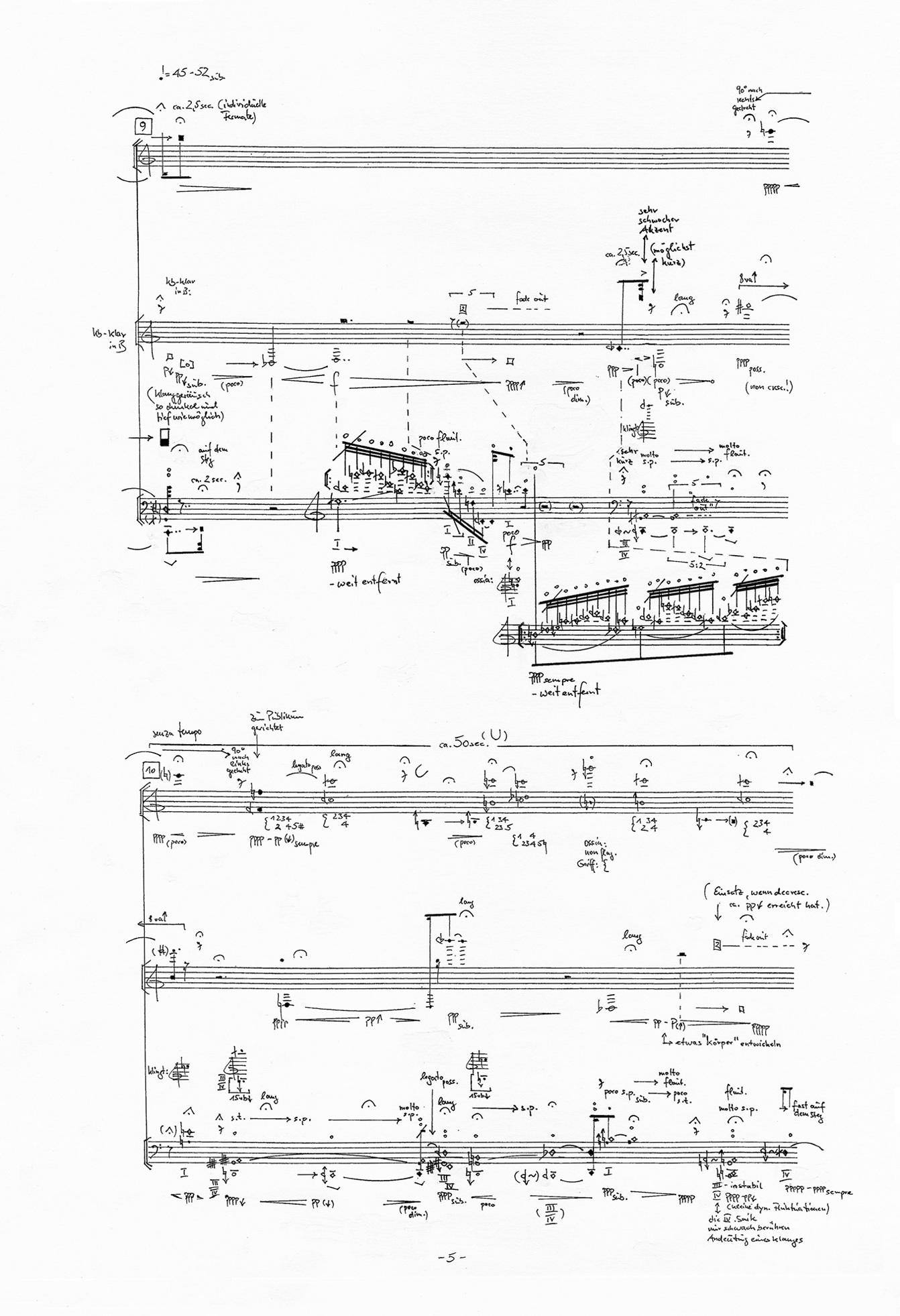
außen, von tief innen
2015
for
flute (fl/ bassfl.), clarinet (clar/ contrabass-clar) and violoncello
Beatrix Wagner about "außen, von tief innen" [English approximation: outside, from deep within]:
In a variety of texts and interviews, the composer Gerald Eckert has repeatedly referred to the significance of "margins" as "residual sound surfaces" and dispersing the "temporary fields" of events. Accordingly, his main focus is frequently not placed on a centrally triggered event or center of action, but on what has been triggered by this event and how the consequences are subsequently developed. In other words, he focuses his sights on what an impulse is followed by. This can be a resulting resonance in the widest sense of the term, for example a spatial division, a spatial tonal migration, a transition from one event or instrument to another, a modulation or a transformation. The resonating traces of sound however always feature the characteristics of the triggering impulse itself, even up to the point of "still there" or "no longer there". This is all observed by Gerald Eckert as if through a magnifying glass, moving – metaphorically speaking – very close up with a zoom lens and observing with microscopic precision.
Jörg Meyer examines the procedural aspect in Gerald Eckert’s music as follows: "Through the increase in complexity over and above the extremes in the various parameters, compactions are created precisely at the point of attenuation: the space is modified and newly structured. Conversely, structures appear to disintegrate by becoming fragile and – above all – momentary. This brings to mind comparisons with modern particle physics according to which particles and their properties (parameters) are primarily characterized through the duration of their (apparent) existence in the “space-time” of possibility/possibilities."
This procedure perhaps most obviously comes to light in the third work on the current CD where the title already provides a suitable indication: "außen, von tief innen". The consistent subtle and quiet tonal structure of the work is captivating and this is precisely what enables the desired differentiation which is created by the fine delineation of multiphones in bass flute and double bass clarinet alongside the tonal differentiation in the violoncello part. These three layers produce an expressive spectrum whose progress repeatedly hints towards an additional electro-acoustic level, despite the fact that all tonal spectrums are generated purely through the musical instruments themselves.
The delicacy of the individual and independent moments does not make it easy to recognize a larger-scale formal context. Perhaps this is however not at all relevant in "außen, von tief innen" as the energetic moments are indeed nourished by individual instants and their specific tonal "materiality" which range between almost transcendental states and processes and physical impressions. ...
